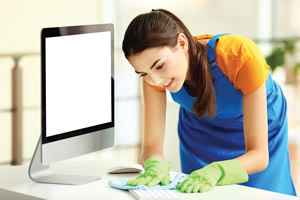A Safer Environment
- By Allen P. Rathey
- 07/01/18

PHOTO © AFRICA STUDIO
When organizations prosper in the long-term, it’s because they have implemented successful processes, and the people involved “have agreed to become part of something important,” said then Alcoa CEO Paul O’Neill; hired in 1987 to turn around the company’s floundering business as an aluminum producer.
As part of the plan, O’Neill gathered Wall Street investors and stock experts to lay out his vision to make it one of the safest companies on earth. He believed the key to protecting workers was understanding “that correct work is also safer work” and that Alcoa needed to become the best, most efficient and safe aluminum producer on the planet.
Safety at Alcoa became a keystone habit, defined by Charles Duhigg in his book, Power of Habit, as catalyst habit that creates a positive ripple effect.
Within a year of O’Neill’s arrival, Alcoa’s profits broke a new record, and when he retired in 2000, corporate net income was five times higher than when he arrived.
The Healthier Cleaning Habit and Beneficial Effects
Like the safety focus at Alcoa, healthier cleaning is a keystone habit that drives other positive habits and practices. Processes that remove soils without chemical residue improve results. Film-free surfaces look better, stay cleaner, and are easier to re-clean.
Cleaning solutions that do not introduce harmful VOCs into the air reduce the highlevels of respiratory illness associated with professionals using conventional products. Replacing quat-based disinfectants with safer solutions may help prevent disrupting cell mitochondria and the estrogen hormone, according to a 2017 report by scientists at UC Davis.
Studies have shown that healthier students learn better. Healthier teachers teach more effectively.
Per the National School Boards Association: “When schools have effective policies and practices that support the health of their students and staff; absenteeism decreases, concentration improves, and behavior problems are reduced.”
Per the Connecticut Foundation for Environmentally Safe Schools: “Schools in Syracuse, New York documented gains in attendance of 11.7 percent which yielded added state funding of $2,512,250.00 the first year after using a cleaning for health regime” that included better vacuuming methods and systematic disinfecting of touch points.
The Habit Loop
Duhigg explains that every habit is a “loop” consisting of a:
- Cue
- Routine or Process
- Reward
He says the easiest way to change a habit is to keep the cue and reward but change the routine (#2). Changing just the routine enables easier habit change.
As a non-cleaning example, on certain days, if you want to replace aerobic exercise with weight training, the old “Cue, Routine, Reward” habit loop may be:
- Cue: Putting your sneakers near the treadmill.
- Routine: Running for 30 minutes on it.
- Reward: Enjoy a refreshing glass of water while you read your favorite book.
To substitute strength training in a new habit loop, swap strength exercises for the aerobic routine in #2 by keeping dumbbells as a secondary cue next to the treadmill.
Replacing Unhealthy Cleaning Habits with Healthier Ones
Replacing unhealthy with healthier cleaning is a platform for important habit change.
Identifying where “cleaning” is unhealthy is the first step to defining correct work process and adopting healthier habits. Cleaning is unhealthy when:
- It adds unwanted substances, such as petrochemicals or fragrances.
- It involves extra steps or exertion, such as heavy lifting.
- It creates or spreads contamination, including chemical residue, rather than eliminating it.
Adopting Healthier Cleaning Habits
When cleaning habits or processes prevent or remove contaminants in fewer steps with less effort, they improve both environmental and fiscal health. Flow charts outlining each process are helpful. Once better process is defined, habit formation is largely a training issue.
As mentioned, adopting healthier cleaning habits is easier if you keep the “Cue, Routine, Reward” loop in place but with a different process, routine, or habit that does not require a big change, such as:
Old Habit
- Cue: Opening the cleaning closet.
- Routine: Using conventional cleaners in your spray bottles, buckets, and auto scrubbers.
- Reward: Turning out the lights on a clean, tidy room.
New Habit
- Cue: Opening the cleaning closet.
- Routine: Using alternate cleaners in your spray bottles, buckets, and auto scrubbers.
- Reward: Turning out the lights on a clean, tidy room.
On-Site Generation – A Healthier Habit
On-site generation of ElectroChemically Activated (ECA) Solutions enables cleaning and disinfecting using traditional methods such as sprayers, buckets, and scrubbers, facilitating habit change by altering the cleaners used in the routine (#2 in the habit loop).
ECA technology uses softened water, salt and electricity to make an all-purpose cleaner and disinfectant in separate streams. Since the solutions have a month-long shelf life, they can be dispensed, stored, and transported where needed.
ECA is healthier than many methods as it does not add fragrance or dye to solutions, is residue-free, and outputs include Green-Seal certified cleaners and EPA-registered disinfectants. They are used like conventional products, though the disinfectant requires less dwell time (e.g., 10 seconds) in many cases.
ECA solutions can replace most conventional packaged chemicals; lowering costs and exposures to respiratory irritants, quats, and other suspect ingredients in common cleaners.
Quat disinfectants are commonly used in schools, yet are known to contribute to endocrine disruption, asthma and respiratory problems. Since solution is dispensed directly at a plumbed-in station via spigot or hose, workers can get what’s needed without lifting five-gallon containers or buckets, and there is no chemical packaging or waste to dispose of in a landfill.
Replacing conventional cleaning with a cleaning routine using on-site generated ECA solutions within existing habits is a way to make healthier cleaning work in schools, while saving money and reducing environmental impacts.
This article originally appeared in the School Planning & Management July/August 2018 issue of Spaces4Learning.